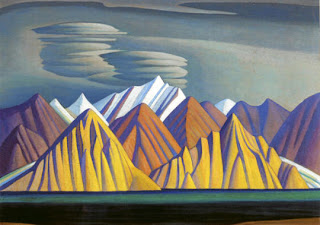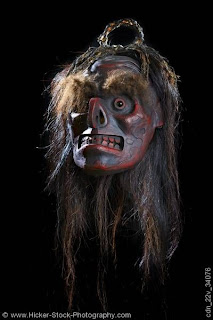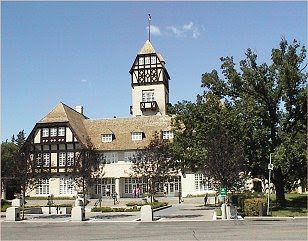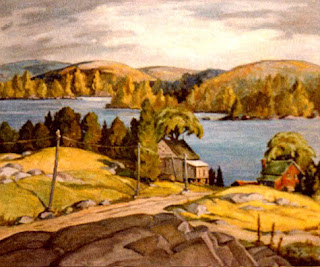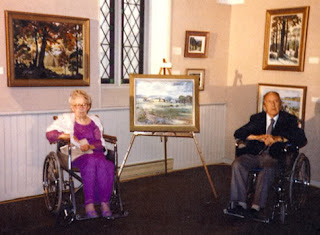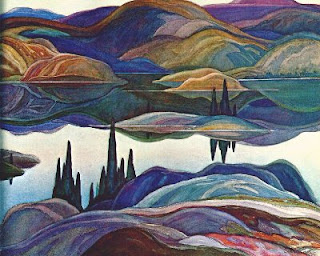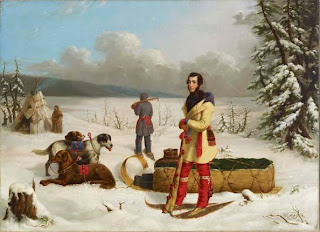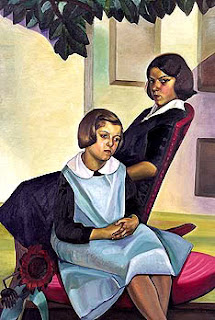
Prudence Heward's, Sisters of Rural Quebec is one of those paintings which captures the imagination.
To begin, its a geometrically designed painting with angles and lines running in the background and through the shapes of her two seated subjects.
Look carefully at the lines and you will see that there isn't much of a defining pattern to them - which in itself suggests thematic dis-coordination.
Lets begin by looking at the two seated girls to see how the artist uses her structural skills to take us to a deeper level of understanding of the work.
There is no sense of unity within the girls. Their bodies are pretty much at right angles from each other - as if they are going their own way. Follow their visual paths, and here again we find a right angle.
The girl wearing the dark dress, is sitting in on a rocking chair, an instrument reserved for older people on country habitant verandahs. Her dress is sober, old womanish, and her face has a scowl. Her rural roots is reinforced by the cross she wears.
The sun shines on the foreground girl's face and the girl in the background has more shading on her face. And, when we really look at the light, the background girl has a shadow behind her. Its a little harder to discern serious shadowing in the foreground girl because of her light coloured dress.
See how the girl in the foreground sits on a plush cushion. Interestingly there appears to be an oversized country fair ribbon on the corner of the cushion. What does this mean? Is this the artist's value statement to endorse the foreground girl?
Note too their facial appearances. The girl on the rocking chair scowls. The foreground girl looks pensive and reflective.
Taken as individual comments they are simply differences to note. But collectively, the two sisters of Rural Quebec present an underlying tension between rural habitant culture and that of emerging Quebec women.
Finally, its important to note that the young woman in the foreground isn't a brassier burning feminist. No way. Her pensive look suggests uncertainty. She dresses as if her heart yearns to break loose from traditional values - but yet, there is a reluctance to get up and take the step forward.
And this is what the picture says to me - that this is a work about social and cultural tensions.
Want me to take it a step further? Take a good, long, hard look at the geometric arrangement in the background. Did you blink? Does it look disturbingly like a swastika?
Not bad. No wonder her 'Sisters of Rural Quebec, is part of the collection in our National Gallery.


